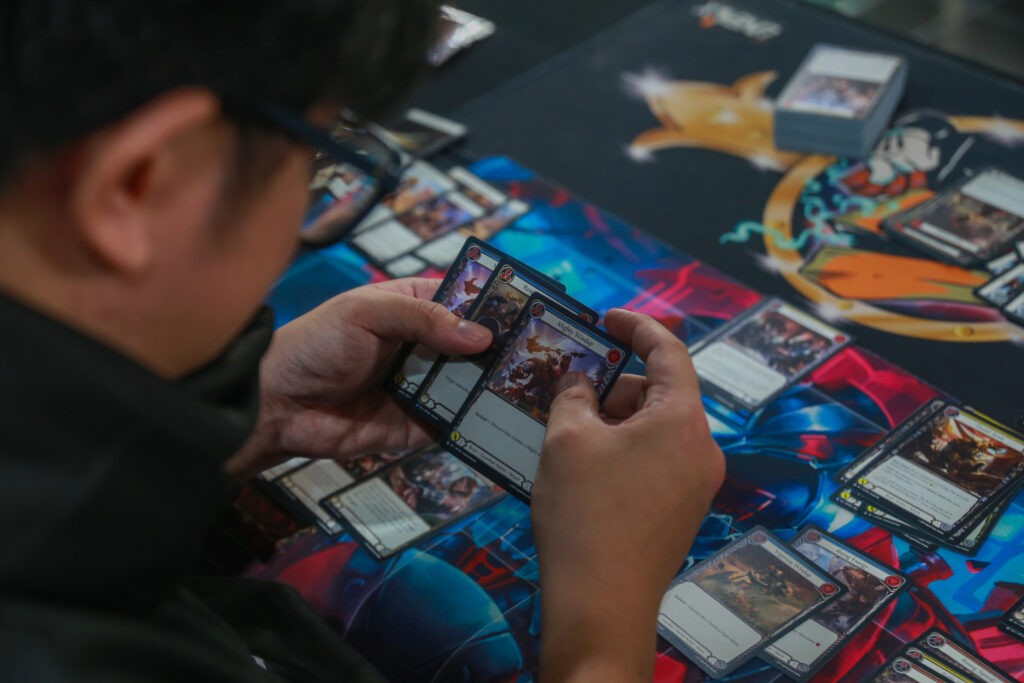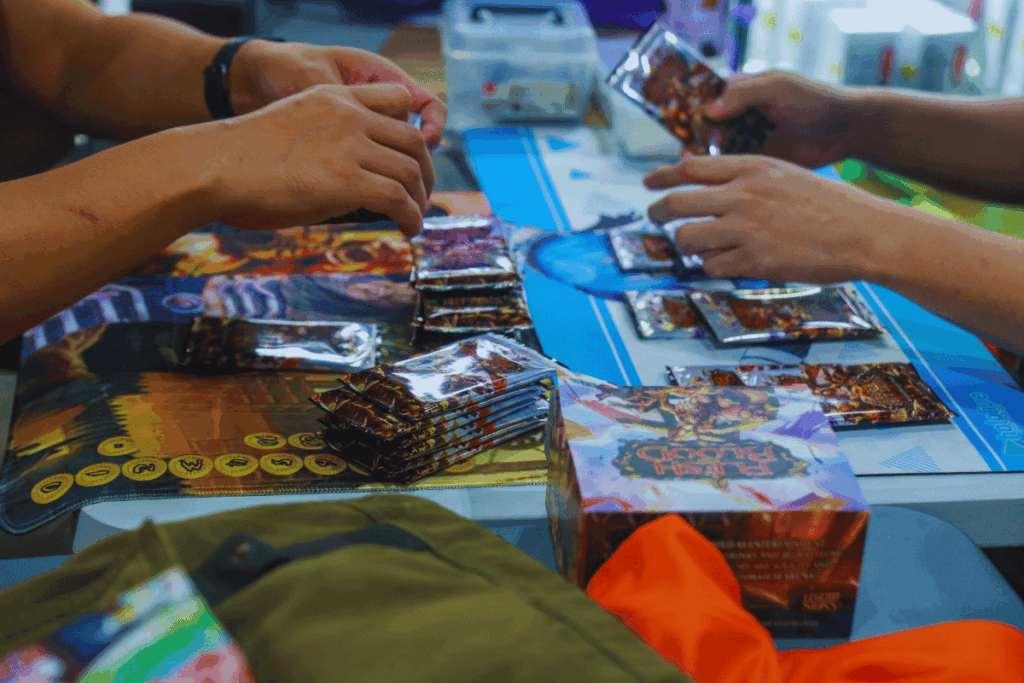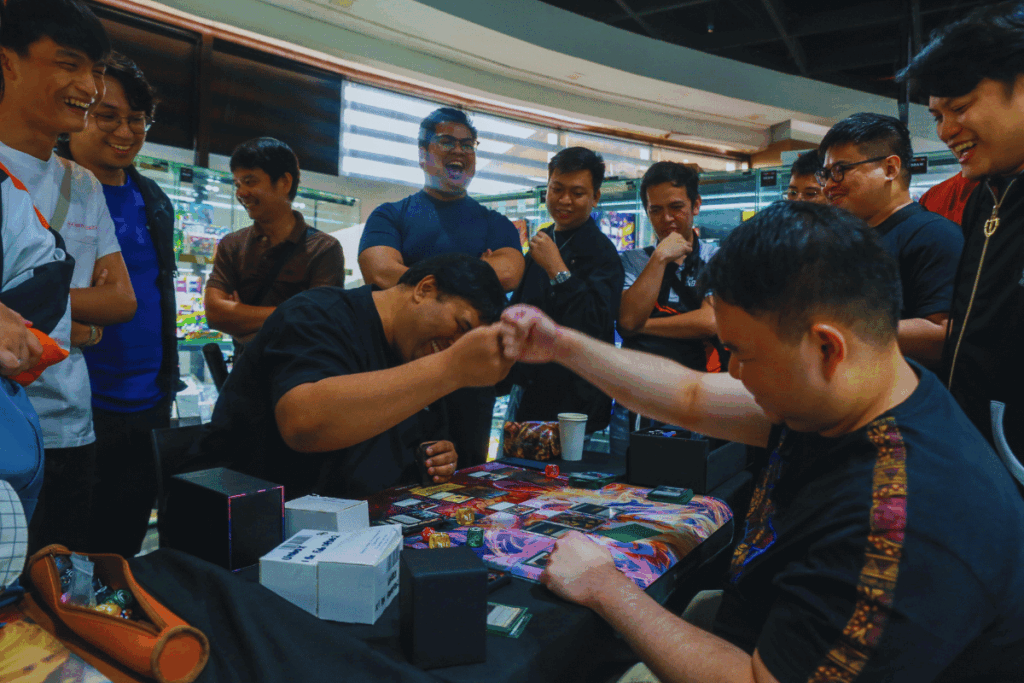Before we get into our article for today, just a quick reminder: fast internet makes everything better. That’s why PLDT Home is still one of the best places to start your setup.
Trading Card Games, or TCGs, can seem like an intimidating world from the outside. You’ve got players slinging lingo about meta decks, flashing shiny foils that cost as much as a weekend trip, and talking about tournaments like they’re preparing for the Olympics. But the truth is, most TCG players started out just like you—curious, a little confused, and wondering if the whole thing is worth diving into.

If you’re thinking about getting into card games like Magic: The Gathering, Flesh and Blood, Grand Archive, Lorcana, Yu-Gi-Oh!, One Piece, or even Pokémon TCG, this guide will walk you through the real essentials—not just the rules, but the stuff nobody tells you when you’re starting out.
You Don’t Have To Break the Bank—But You Will Spend
One of the first things you’ll notice is that Trading Card Games can get expensive, fast. But not every deck needs to cost a fortune. Most card games offer preconstructed starter decks or “precons,” which are made for beginners and give you a fully playable deck right out of the box. They’re affordable, decent in power level, and often designed around one theme or strategy so you can learn the game naturally.

The temptation to buy booster packs is strong—they’re flashy, they give you that dopamine rush of opening something valuable—but they’re rarely the most efficient way to build a solid deck. Booster packs are more for collection-building or for the thrill of cracking open something shiny. If you know what deck or cards you want, buying singles (meaning the individual cards) is often the better route.
At some point, especially if you want to try competitive play, you’ll come across “staples”—cards that are used in a wide variety of decks because they’re strong and versatile. These tend to hold their value but can get pricey, so it helps to slowly build your collection rather than chasing every new release.
Rarity Isn’t Everything—But It Can Still Matter
When you start handling cards, you’ll see terms like “common,” “rare,” “super rare,” and even “mythic” or “legendary,” depending on the game. It’s easy to assume that the rarer the card, the more powerful it must be. But that’s not always true.
Some rare cards are powerful, sure—but others are only valuable because they’re limited, have alternate artwork, or are part of a collector chase. In fact, many competitive decks are filled with commons and uncommons because those cards form the backbone of consistent, strategic gameplay.
That said, some of the best-performing decks do include high-rarity cards—usually because those cards offer something unique or game-changing. If you’re on a budget, it’s important to learn which cards are essential to your strategy and which are just luxury upgrades. Understanding this difference can save you a lot of money.
What the Heck Is the Meta?
The term “metagame,” or simply “meta,” refers to the landscape of popular and powerful decks at any given time. It’s shaped by tournament results, new set releases, balance updates, and what players are currently gravitating toward. The “Tier 1” decks are usually the ones dominating competitive events—meaning they’re well-optimized, consistent, and hard to beat.
As a beginner, you don’t have to follow the meta closely, but it helps to be aware of it. If you’re playing casually with friends, feel free to run whatever deck makes you happy. But if you plan to join tournaments, you’ll want to know what strategies you’re likely to face and what tools can help you counter them.
Following YouTube channels, Reddit threads, or local communities can help you stay in the loop. You don’t need to become a theory-crafter overnight, but getting a sense of the current landscape can make your games a lot more rewarding.
There’s More Than One Way to Enjoy Trading Card Games
Not everyone plays Trading Card Games for the same reasons. Some are die-hard competitive players who aim for the top tables at every event. Others are casual players who meet up weekly just to have fun and try weird combos. Some people collect cards purely for their art, rarity, or sentimental value. Then there are traders—people who love the buy-sell economy of the game and keep an eye on card values like a stock portfolio.

You might find yourself fitting into one of these types, or bouncing between them. That’s the beauty of Trading Card Games—they’re flexible. You can play however you want, and there’s a community out there for every kind of player. Don’t feel pressured to conform to one “right” way of enjoying the game.
Take Care of Your Cards—Seriously
When you start collecting, it’s tempting to just toss your cards in a box or your bag and call it a day. But a big part of this hobby is card care, and it’s not just about preserving value—it’s about respect, both for your stuff and the people you’re playing with.
Card sleeves are a must. They protect against scratches, dirt, and wear from shuffling. You’ll also want a decent deck box, especially if you plan to bring your cards to tournaments or events. For rare or expensive cards, consider putting them in hard plastic “top loaders” or storing them in binders with acid-free sleeves.
This kind of protection isn’t just for show—it helps your cards last longer and makes trading or selling them easier down the line.
Trading and Selling—A Whole Game on Its Own
Once you start building your collection, you’ll realize you often end up with extra cards you don’t need. That’s where trading and selling come in.

Trading is a classic part of the TCG experience—it’s social, it’s fun, and it’s how a lot of players build their decks without spending more. But it does require some basic knowledge of card value. If you don’t want to get ripped off, check sites like TCGPlayer or your local Facebook groups to get a sense of what your cards are worth.
Selling can also help you fund your next deck or box. Some cards spike in price due to tournament wins or set rotations, and if you’re paying attention, you can sell at the right time. Just make sure to be transparent about card condition when selling online or in person.
The Best Way To Learn? Just Play
You can read every guide and watch hours of deck techs, but nothing beats actual experience. Go to your local game store and join a Learn-to-Play event. Ask if they have demo decks. Talk to players. Most communities are excited to teach newcomers, especially if you show genuine interest.
Trading Card Games can seem dense, but once you shuffle up and play your first few games, the mechanics and language start to click. Don’t worry about being perfect—just focus on having fun and learning something new each time you play.
No Pressure, Just Play
Getting into trading card games isn’t about chasing hype or spending a ton. It’s about discovering a game you enjoy, finding your people, and maybe even building a deck you’re proud of. So start small, play often, and don’t be afraid to make mistakes.

You’ve got a long road ahead if you choose to stick with it—but that first step? It’s just picking up a deck and shuffling in.
Check out more of our TCG-related articles!
Read More:
The Best Deck Boxes We’ve Tried in 2024 – VRSUS
How To Find The Perfect Trading Card Game Deck Box – VRSUS





